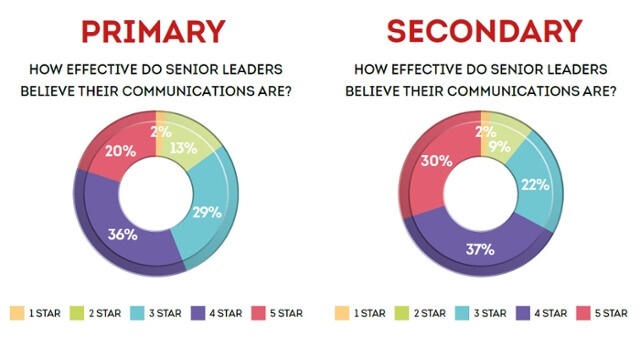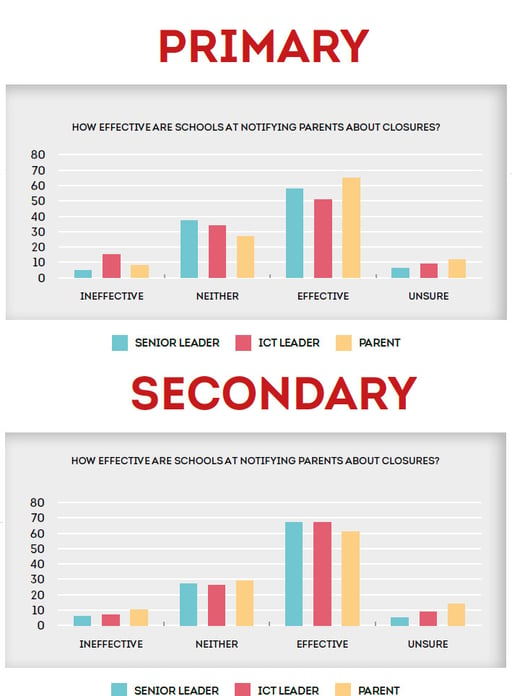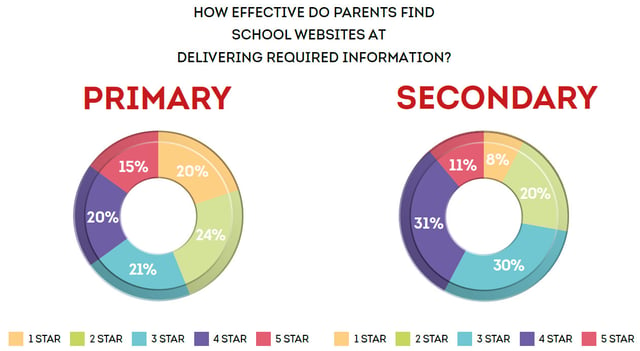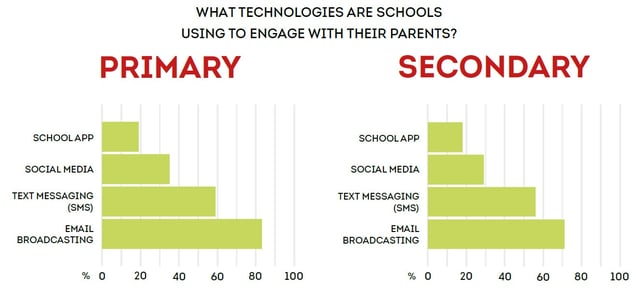In addition to our previous blog, examining the difference in perception between parents, senior leaders and IT professionals, we are continuing to dissect the Parental Engagement Effectiveness Report to better understand the implications for schools. The topic in question this time is about where schools go wrong in reaching out to parents of children.
Do schools believe there is an issue here in the first place?
Before launching straight into the specifics, it was important to establish just how aware schools are about their issues communicating. To tackle this, schools were asked a simple question: “How effective do you think your school is at communicating with parents?”

As you can see, there are very few SLTs that believe their school has a significant problem with reaching out. A fifth of primary schools and nearly a third of secondary schools seem to see no obvious weakness in the systems they have in place. Our previous article, Parental Engagement: Perception and Reality, illustrates a more direct comparison with how the view of parents and senior leaders differ.
We decided to dig a little bit deeper, into areas that schools may have simply not considered. While there are many scenarios in which a school will make contact, the unforeseen circumstances, such as short notice closures, provide a stress test that gives a good gauge on how good their system actually is. By asking about effectiveness in an unscheduled scenario, we found how strong their confidence was.

In this particular instance, senior leaders’ responses are what we will be focusing on, and the results are quite telling. 42% of primary and 33% of secondary schools do not feel confident enough to say that their system is effective. This is not even factoring in those who are unsure (the option was extended to those who have not had the need to communicate at short notice), which means that a very large number of schools are not as confident as you might expect.
How well do school websites work to distribute information?
Nowadays, information is expected on the spot. Parents can misunderstand or misplace information and need to be able to find it again; websites often being the first place to look. Parents were asked how effective they find their school’s website to be when searching for specific information.

The results are very heavily weighted against the schools for primary, with only 35% of parents indicating that it is useful. An enormous 45% have said that they find the school website a poor place, which is not something to be ignored. Primary schools are very clearly lacking in this area and would benefit from more effective use of their websites.
For secondary schools, things don’t look so dire. Most of the parents score either 3 or 4 stars, indicating that for the most part they are content. While they would no doubt like to see a higher proportion of parents scoring five stars, this is offset by just 8% slating the way information is distributed across the website.
Is social media utilised effectively?
Schools adopt technology at different rates to each other, partly due to funding issues and partly due to lack of exposure, but with social media, schools have a tool that is interwoven with people’s daily lives and is completely free to use. With regards to parental engagement, it offers enormous potential. The survey asked the parents about how many of their schools are using social media, as well as other channels such as emails, texts and app notifications.

As the data shows, neither primary nor secondary schools are yet to fully engage their parents with social media. Of course, this does not mean that there are no accounts set up for the schools, but clearly there is work to be done with regards to engaging parents across Twitter and other social platforms.
As expected, the majority of parents are in touch with their schools via email and text, but what remains curious is the rate at which school apps are adopted. In particular, as years go by and more people that grew up around similar technology are sending their children to school, it could be expected for apps to become the main way of reaching out, on account of being free via push notifications, integrating well with other communication software and being direct.
So where do schools go wrong in communicating to the homes of children?
Based on the results of the survey, it seems that schools still have a long way to go in terms of adopting new and effective technology. In the case of short notice closures, where a large number of SLTs felt they had significant room to improve, the adoption of app based tech would give them a rapid means of reaching out to everyone in their school.
Recommendations to avoid communication issues
- Before any action can be taken, you need to know what needs solving. One of the best ways to do this is by hearing from the parents; draw up a survey with your board of governors and use the information you receive to find the crux of the problem.
- Once you’ve found what needs addressing, you need to prioritise how you’re going to fix it. Draw up action plans, for mediums like social media and your school website and make the improvements that need to be made.
- Review your plan for short notice closer/emergencies. It can be tempting to continue with what has always been there, but a fresh take on how to communicate in emergencies can identify holes that need filling. Make sure parents are kept updated about any changes to the system.
- Make sure to consider the balance between improvements and costs. Time and money can be saved if you explore some of the solutions for problems you find. Not everything has to be handled exclusively by the teachers and admin staff.
To download the complete Parental Engagement Effectiveness Report, please fill out the form.